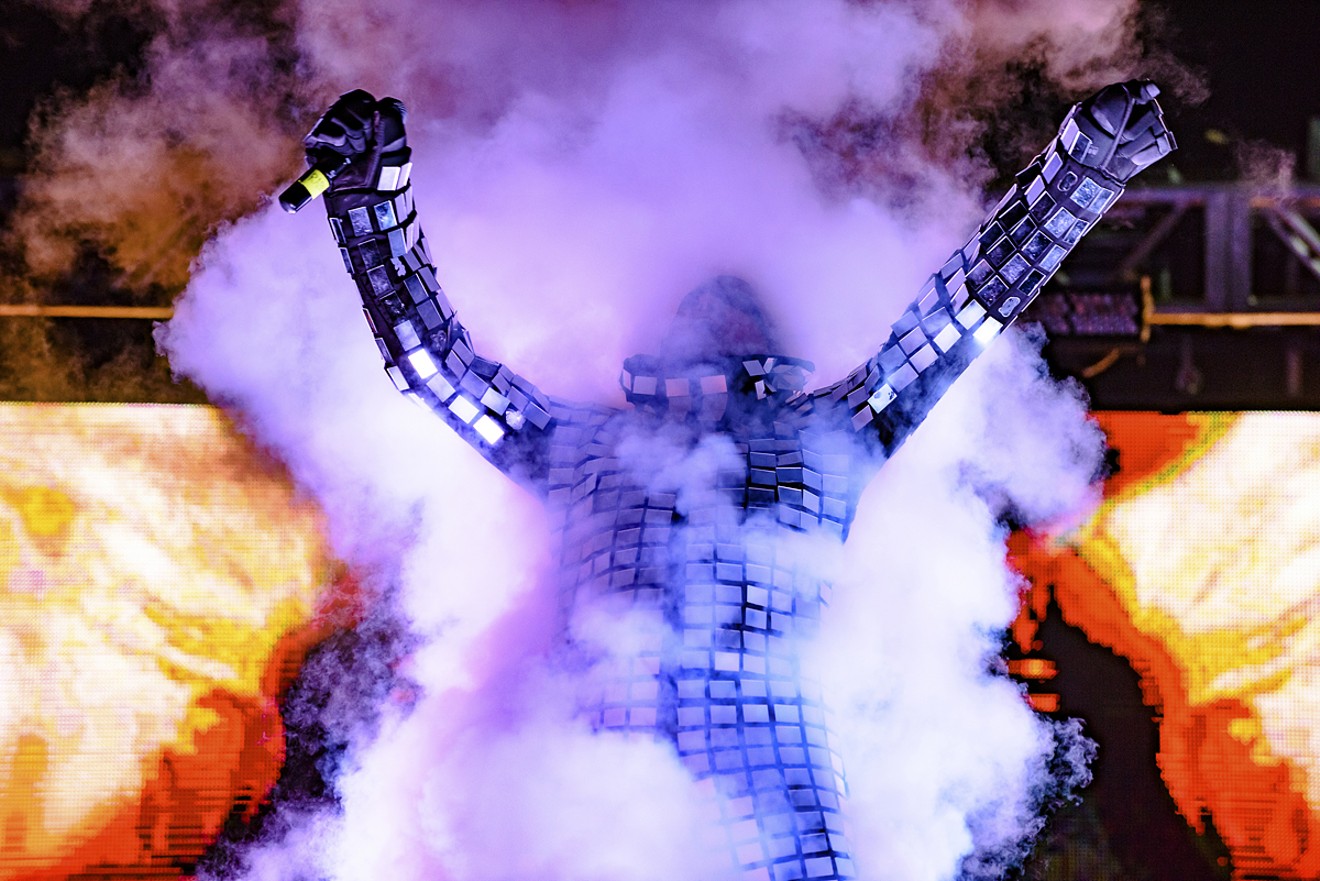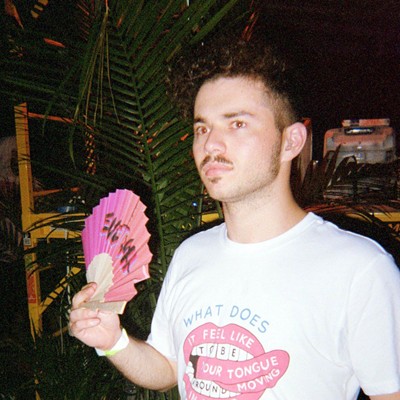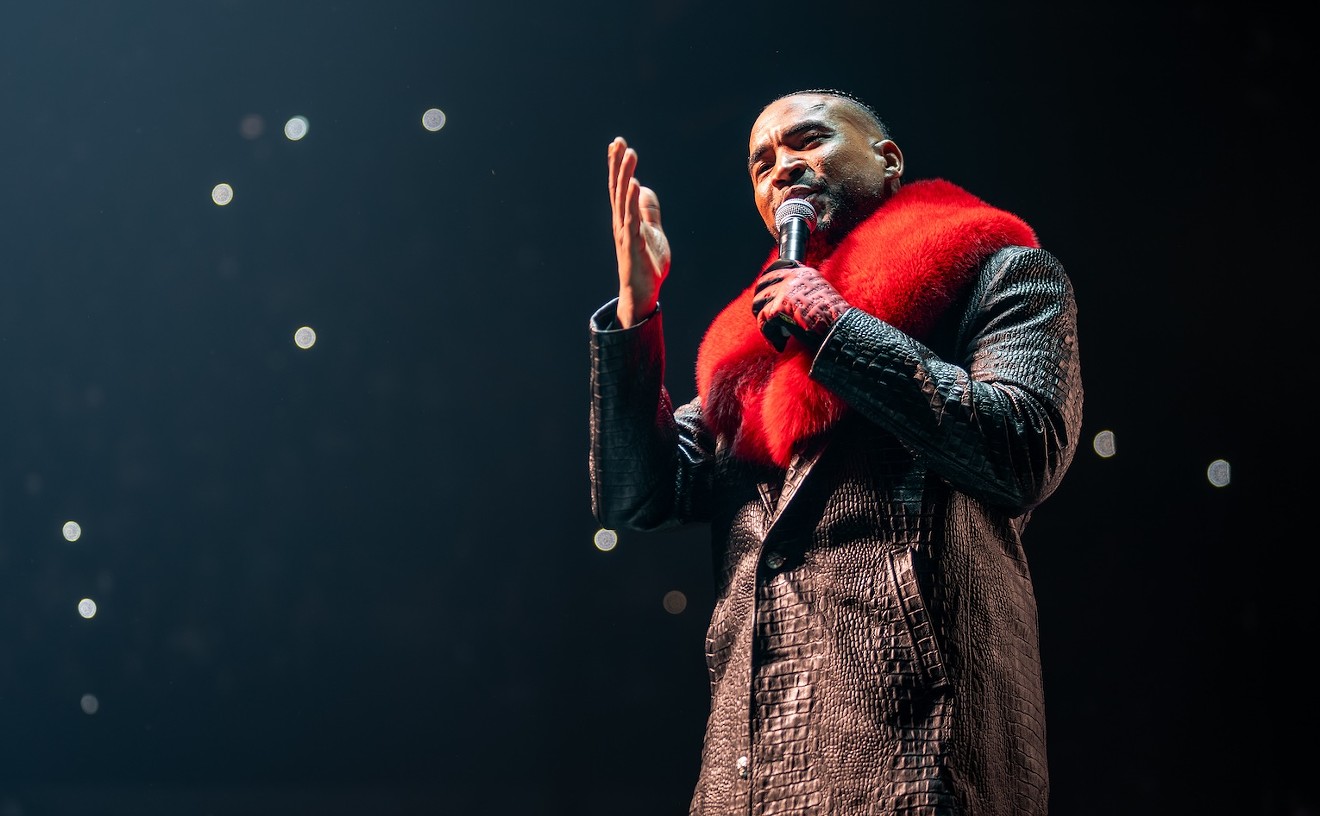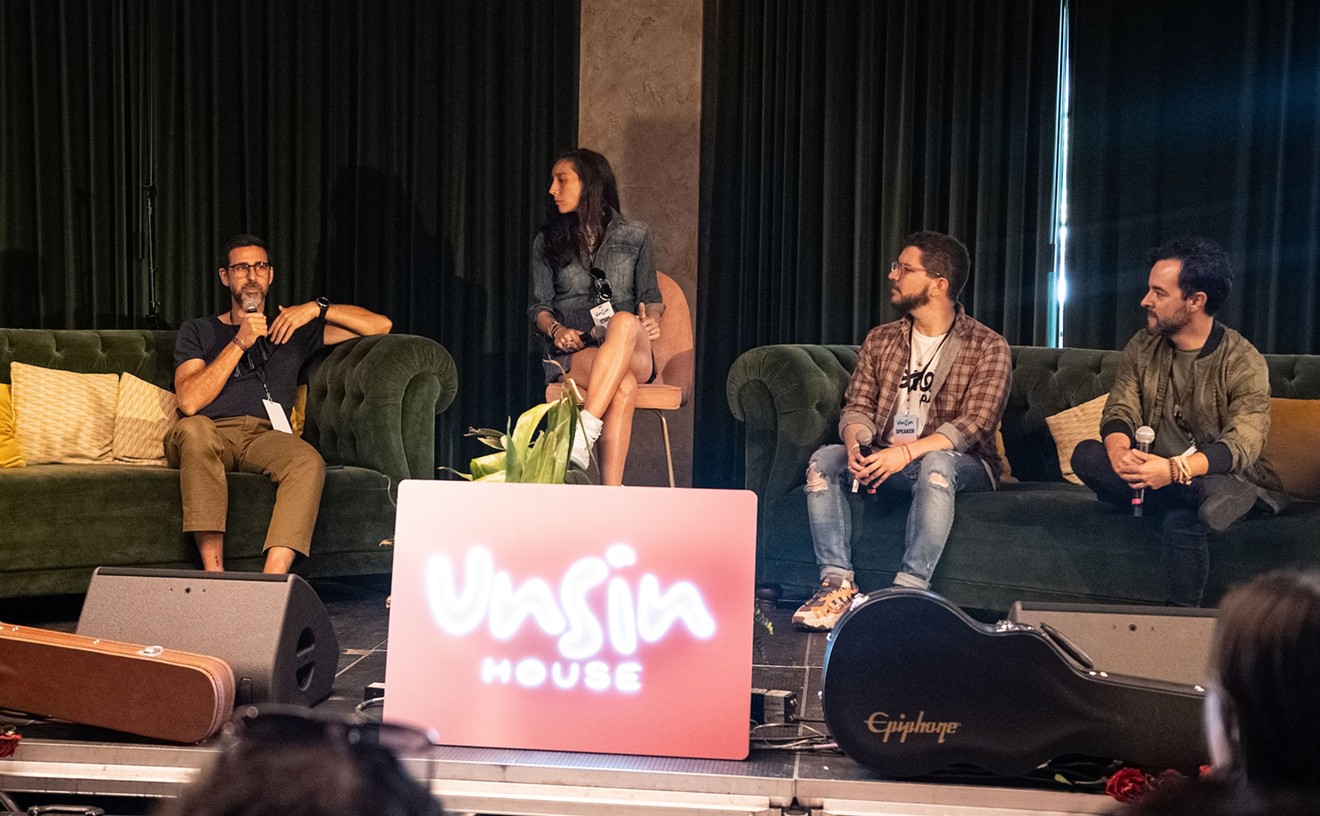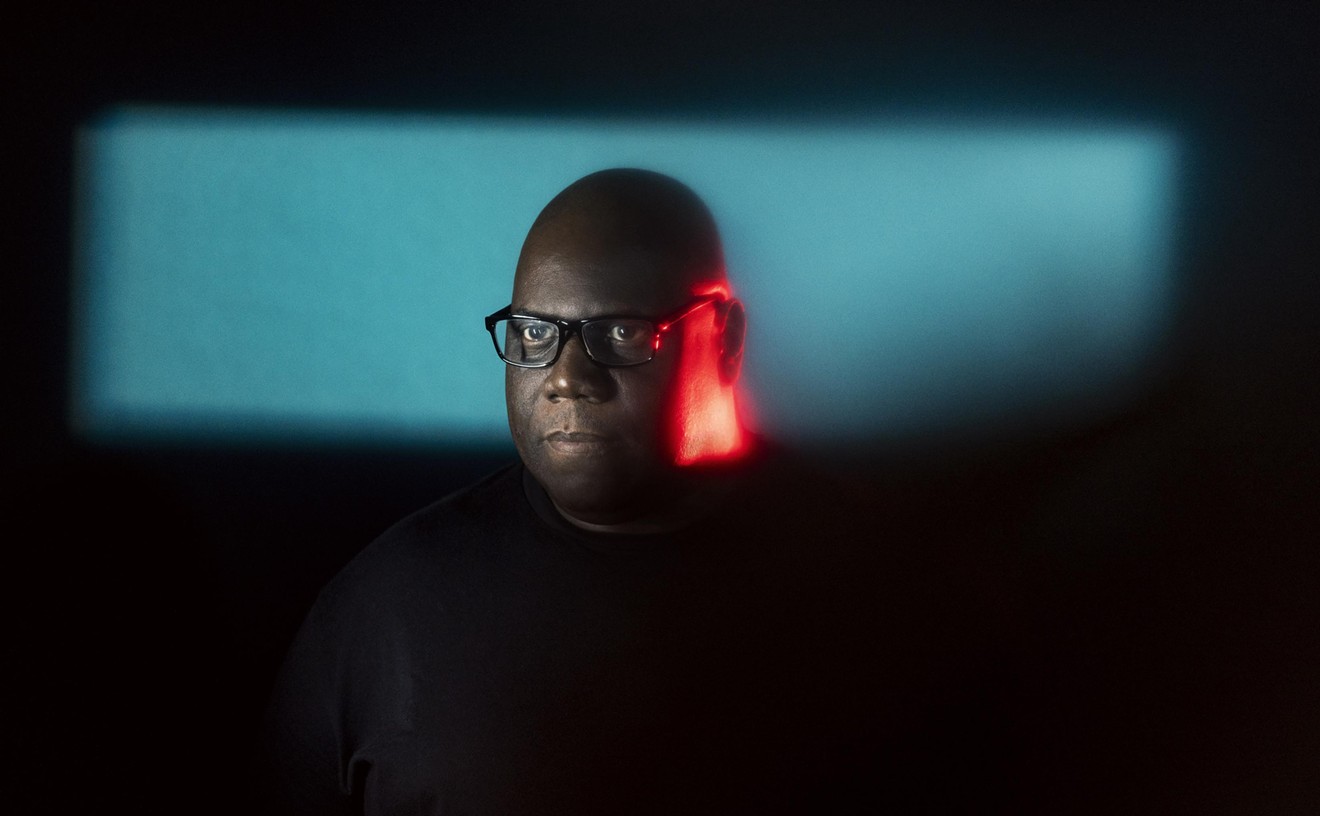Bunny, the imposing, blond-dreaded frontman of Rabbit in the Moon, remembers Ultra Music Festival beginning with a bang.
"One of the memories I have from the first Ultra was walking back to the stages — they were facing the ocean and they had a fence in the back. I get there and I'm looking down, and clearly there were 60 people fucking against the back fence," Bunny recalls with an enthusiastic laugh. "This is around midnight. I just wanted to put my feet in the water. It was like everybody decided, 'OK, this is where people are going to fuck, back by the ocean.'"
If anyone is qualified to speak on the history and development of Ultra, it's Bunny and his Rabbit in the Moon creative partner, Los Angeles-based producer David Christophere. Rabbit in the Moon — then a trio including DJ Monk — headlined the first two editions of Ultra, in addition to performing at the festival repeatedly over its 20-year history. Acclaimed for their mind-bending, innovative live shows, the members of Rabbit in the Moon are the unsung heroes of live electronic performances, blending spectacle with dance music in a manner that had never been done before and has rarely been matched since.
Rabbit in the Moon was born from the then-nascent rave culture of Tampa in the early '90s. In the late '80s, that city's clubs had been awash in the gritty beat of industrial music. But as the tides turned and clubgoers became entranced by the sounds of English rave artists such as Caspar Pound and the Prodigy, both Bunny and Christophere became enthralled with the possibilities of this new movement.
"I was really inspired by performance art from early dance artists in the industrial scene, like Meat Beat Manifesto," Bunny says. "I really connected with what they were doing. This was like '88, '89, when that really affected me, and I started doing performance art in bands."
"We took a lot of weird risks, and Ultra was one of them."
tweet this
Bunny and Christophere, honing their crafts in Tampa's rave scene as performer and producer, respectively, eventually linked up with DJ Monk, who owned a club at the time and had begun to throw warehouse parties — actual raves. Once Monk began imbuing his parties with a sense of theatricality, the pieces for what would become Rabbit in the Moon fell into place.
"There was a visual element because we were having to decorate warehouses with something interesting," Christophere recalls. "And if you think about it, that's what Rabbit in the Moon became. We have this stage — let's figure out how to decorate it with something interesting so that when people are here, they're experiencing something, like when you walk into an art show or exhibit."
"Most rave music didn't have lyrics back then, so being able to have someone that was a shaman or like the conductor of the audience was kind of necessary," Bunny adds. "No one was doing it at the time, or since really; in dance music, how many frontmen do you know?"
As they began organizing warehouse raves in Tampa and performing in clubs across Central and South Florida, they steadily built a reputation for live shows that worked crowds into a frenzy. Bunny recalls a show at the legendary bygone Orlando venue Edge Nightclub as a particularly inspiring moment.
"I lowered down [from] the ceiling in a mirror suit and crowd-surfed all the way to the stage," Bunny recounts. "And Dave was playing samples over beats Monk was playing, and the energy of the crowd was insane — and no one knew who we were!"
Having built a steady following over the '90s through their shows and repeated attendance at Winter Music Conference, Rabbit in the Moon was eventually asked to headline the inaugural edition of Ultra in 1999.
"You look back and you're like, Wow, we took a lot of weird risks, and Ultra was one of them, because they really weren't promoters that had their shit together yet," Christophere says with a chuckle. "But there's just something where you talk to people and you can see the dreams in their eyes, and you're like, Yeah, we have those dreams too, and we want to do something cool."
Following a successful first year where the group built onstage screens to project its iconic visuals, Rabbit in the Moon forged a close relationship with Ultra, becoming something akin to the festival's in-house band and eventually earning its own stage, the Rabbit Hole.
But even a few years in, neither Rabbit in the Moon nor the festival's organizers foresaw the cultural juggernaut that Ultra would become.
"The party just felt like a giant one-off; it didn't necessarily feel like this is going to be a festival you can do every year on the beach," Christophere says. "It wasn't until [Ultra] went downtown that you really felt this cultural shift."
According to Christophere, the rise in popularity of Ultra and electronic dance music was one of those perfect alchemic blends that could have arisen only under specific conditions.
"On one side, you had really horrible things happening like 9/11, and the Bush presidency wasn't all that great for raves — there were these weird laws being passed trying to stop people from throwing parties," Christophere says. "But then people like Paul Oakenfold decided, 'Hey, I'm going to go conquer America with trance.' With people like him, Sasha, and Paul van Dyk, they all started the groundwork of what became trance music, but Paul Oakenfold literally turned it into like a movement in America, and that brought Tiësto.
"I think it was that shift of trance music culture at Ultra — that's when you could tell it had gotten bigger than I think they had ever imagined."
Even as the predominantly popular sounds of dance music changed — from electroclash to trance to dubstep and eventually EDM — the ongoing growth of Ultra remained constant, as did Rabbit in the Moon's presence and elaborate stage shows involving chainsaws, dancers, and LED suits. That is, until 2010, when Bunny performed as Rabbit in the Moon sans Christophere at Ultra. Following the intense pressure of recording their 2007 multimedia release, Decade, the frays in the group began to show, culminating in what then seemed to be a permanent breakup.
After reconciling to work on a documentary about influential California electronic music festival Nocturnal Wonderland, Bunny and Christophere reunited as Rabbit in the Moon at Ultra 2016. Two years and several live shows later, they are more energized than ever, releasing more music than they ever had in their initial run, their latest being January's Vibration EP. Looking ahead to the 20th anniversary of the festival to which they're tied, Christophere and Bunny are thankful for their creative collaboration and careers, as well as mindful of their influence.
"One of the funniest moments for me was hanging out at [the long-running Los Angeles club night] Monday Social right before Joel Zimmerman — Deadmau5 — got really big," Bunny shares. "And he had DJ'ed at Ultra when he first came out with the whole mouse ears and helmet. Talking to him, he was like, 'Man, it's rough. This is the best I can do, 'cause you already did everything!'"
Rabbit in the Moon. At Ultra Music Festival 2018, Friday, March 23, through Sunday, March 25, at Bayfront Park, 301 Biscayne Blvd., Miami; 305-358-7550; bayfrontparkmiami.com. Tickets cost $1,499.95 via ultramusicfestival.com.

